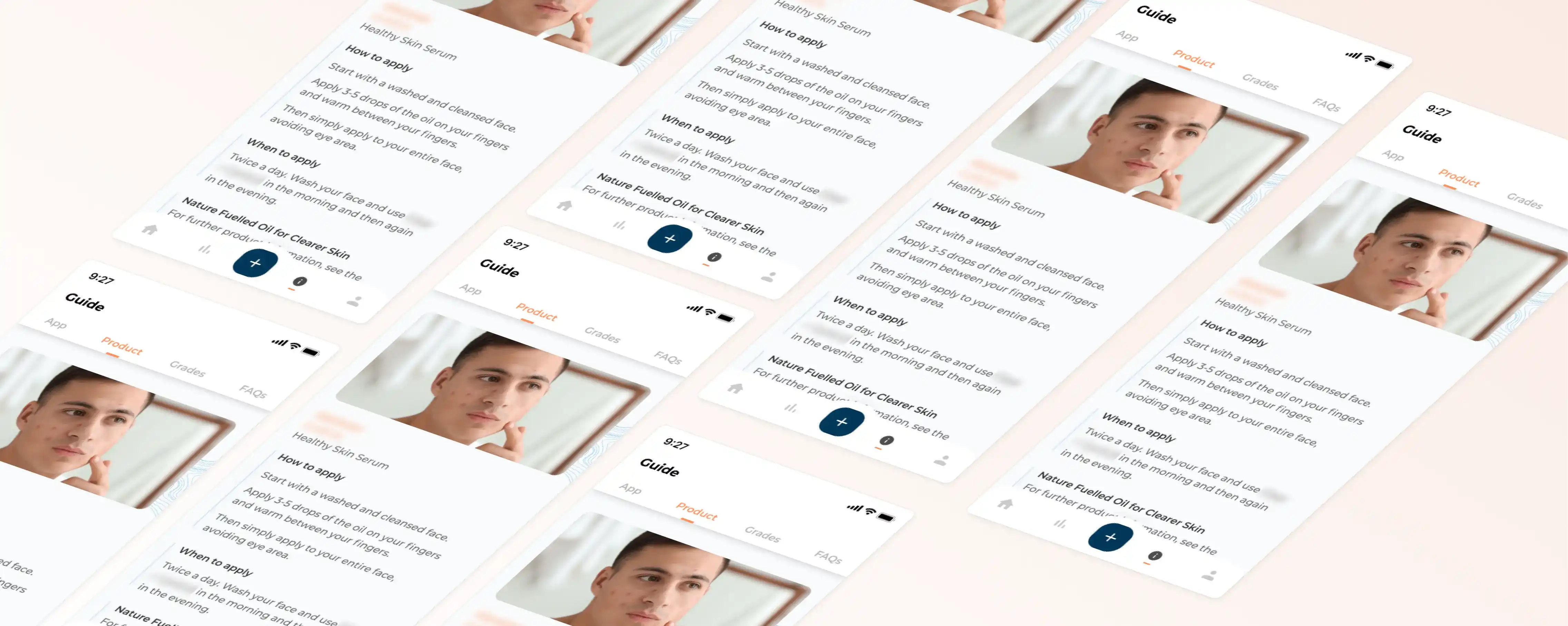
About
Terasana Buddy is a companion app for a skincare serum. It helps users track their skin progress and reminds them to apply the serum daily. The app is downloaded when they purchase the product. Its main features include facial scanning to detect blemishes and daily reminders that encourage users to build a routine and get the most out of the product.
The Challenge
Many users have busy routines and often forget to apply their skincare serum consistently, which affects the results.
Our main audience includes Gen Z and Millennials who are comfortable with mobile apps and expect things to be fast and easy to use.
The Goal
The goal was to help users apply the serum regularly by sending timely reminders. Consistent use increases product effectiveness and improves the chances of reorders.
We achieved
- 95 percent notification opt-in rate
- 70 percent of users opened the app after applying the serum.

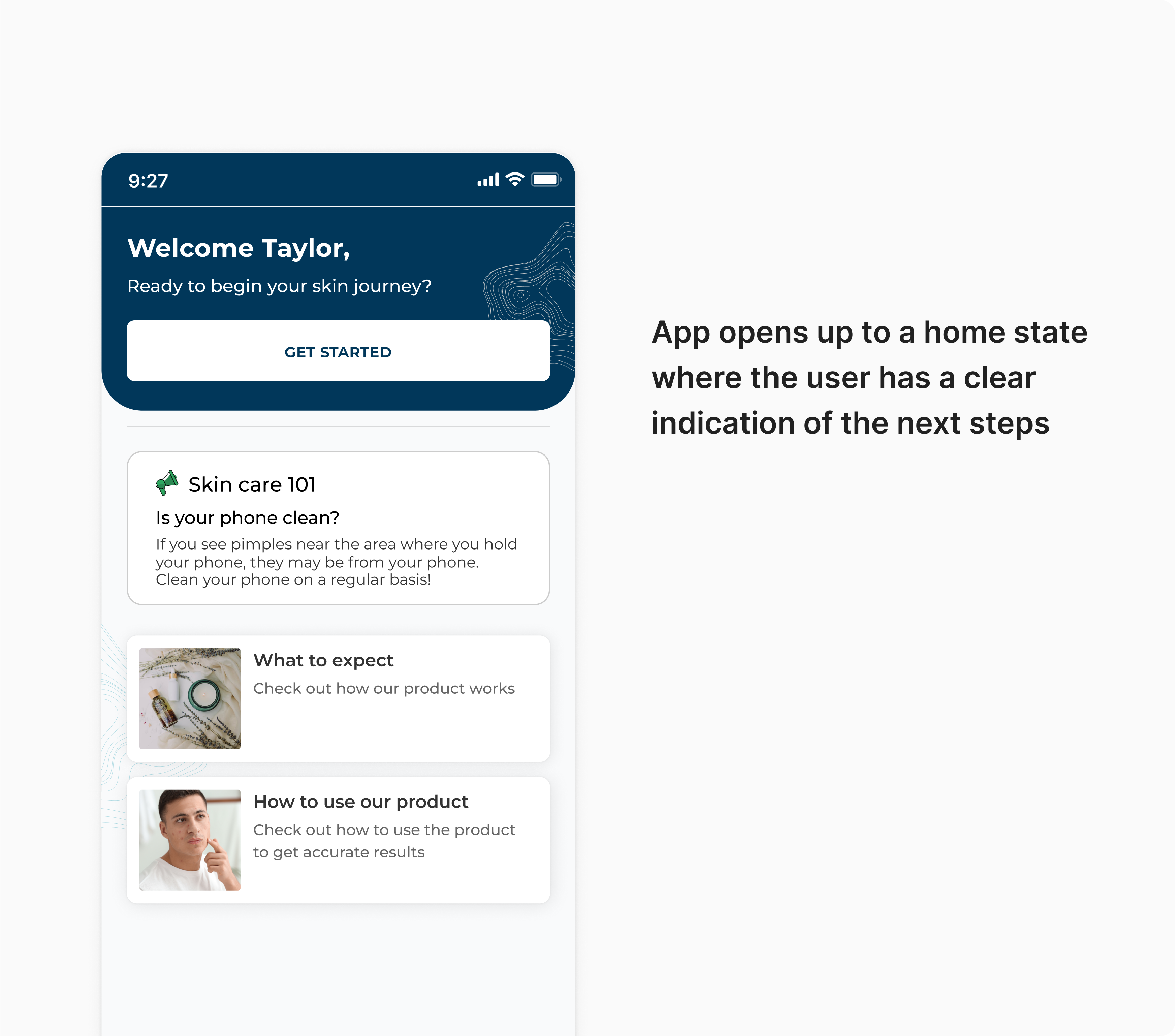
Potential Problems
Notification Behavior Across Platforms
Since the app works on both iOS and Android, we had to handle notifications differently. Android allows notifications by default, while iOS requires users to manually give permission. We also had to consider that the interface for giving permissions changes depending on the OS version.
User Behavior Insight
In testing, we saw that many users, especially younger ones, quickly tapped through onboarding screens just to reach the end. There is need to remind the user about process.
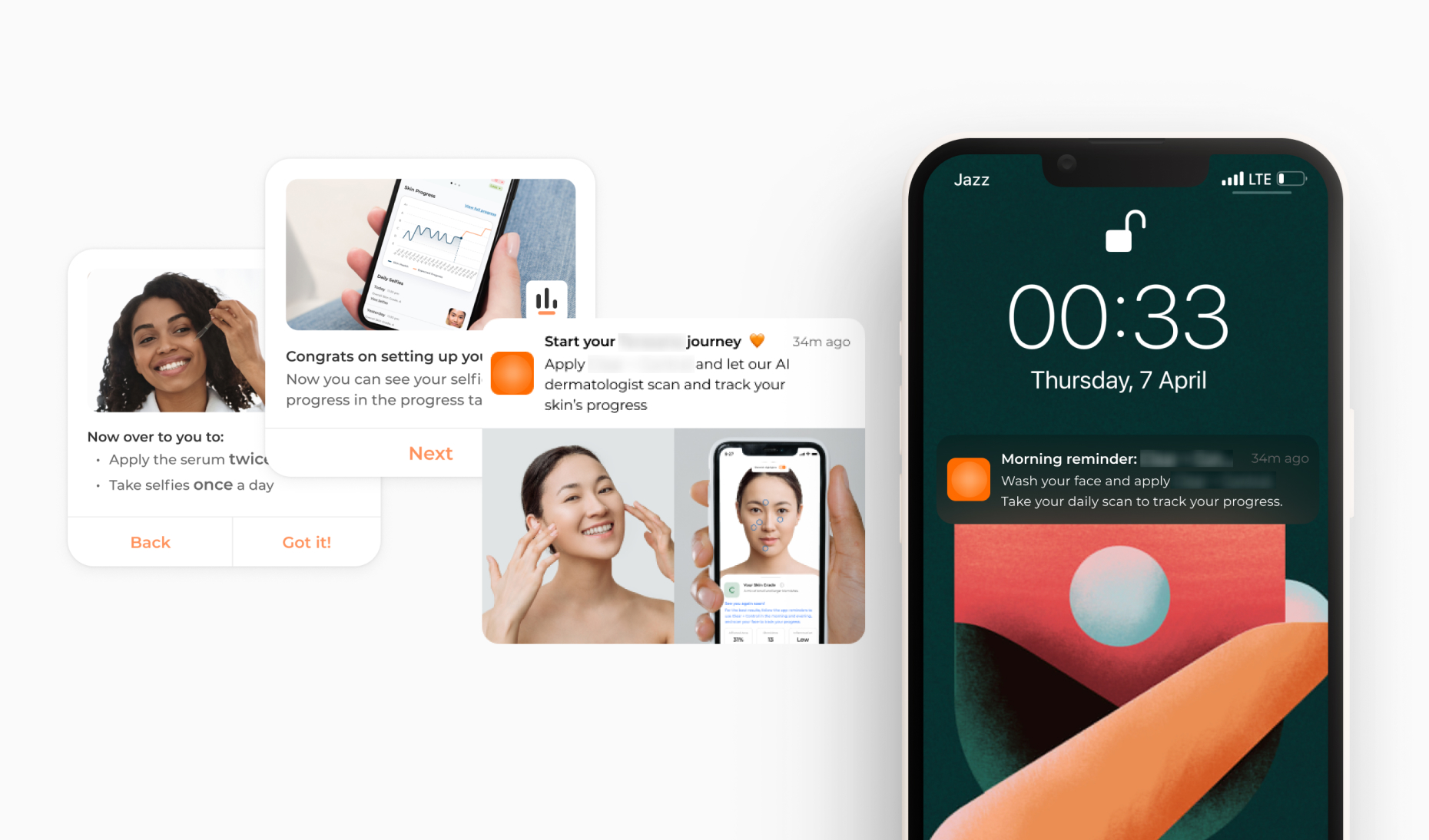
Approach
The app experience was broken into three phases and identifying ‘Opportunity’ to remind users about the process.The first phase focused on sign-up and onboarding. We made this part simple and clear so users could understand the value of the app and allow notifications without feeling overwhelmed.
Phase 1: Sign-up & Onboarding
Our app will cater to both iOS & android. We found out default behaviour of notification is different on both platforms. Also, the updated versions have different user interface
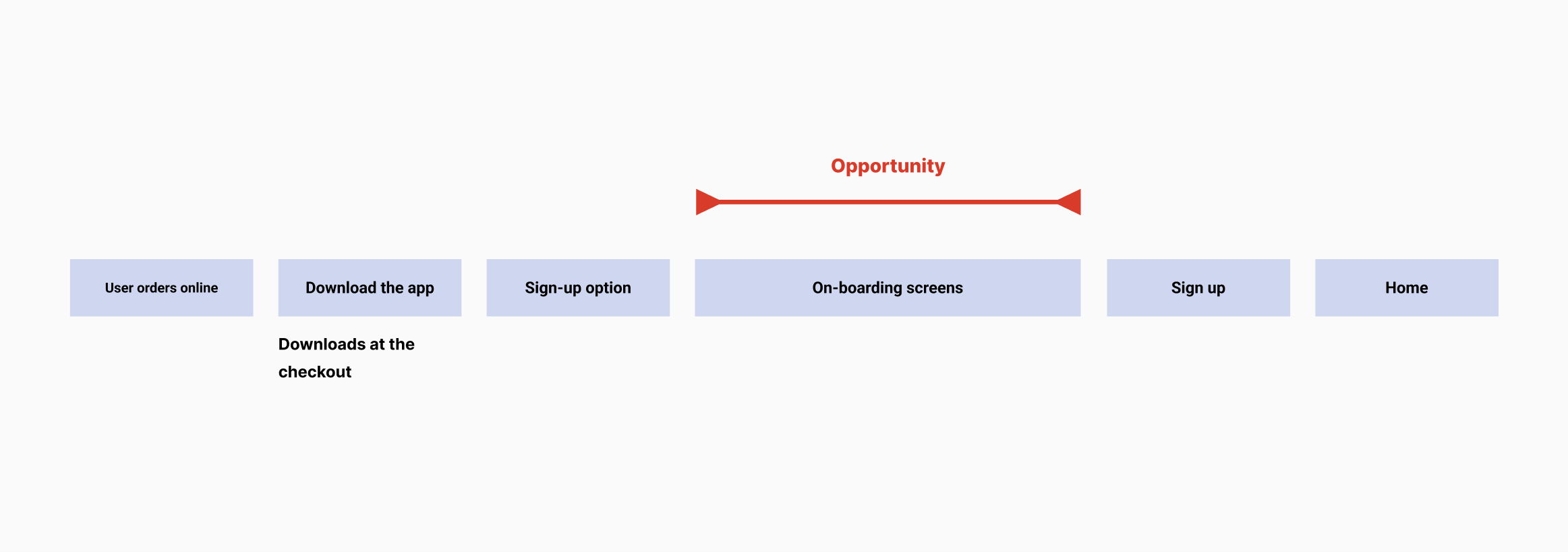

Phase 2: Pre-Arrival State
In the second phase, we addressed the time between order and delivery. We created a pre-arrival state that let users explore the app, scan their face, and learn more about the serum while waiting. This helped build excitement and got them ready to start using the product as soon as it arrived.

Notification permission - A necessity
Notifications were a key part of the app. We know that after the user has given us the signal that they have received the app, there is nothing that we can do unless they gave use permission to send the notification.
Android users were opted in by default, but iOS users had to manually allow them. This made it harder to reach some users, so we had to time the permission request carefully and explain why it was important.
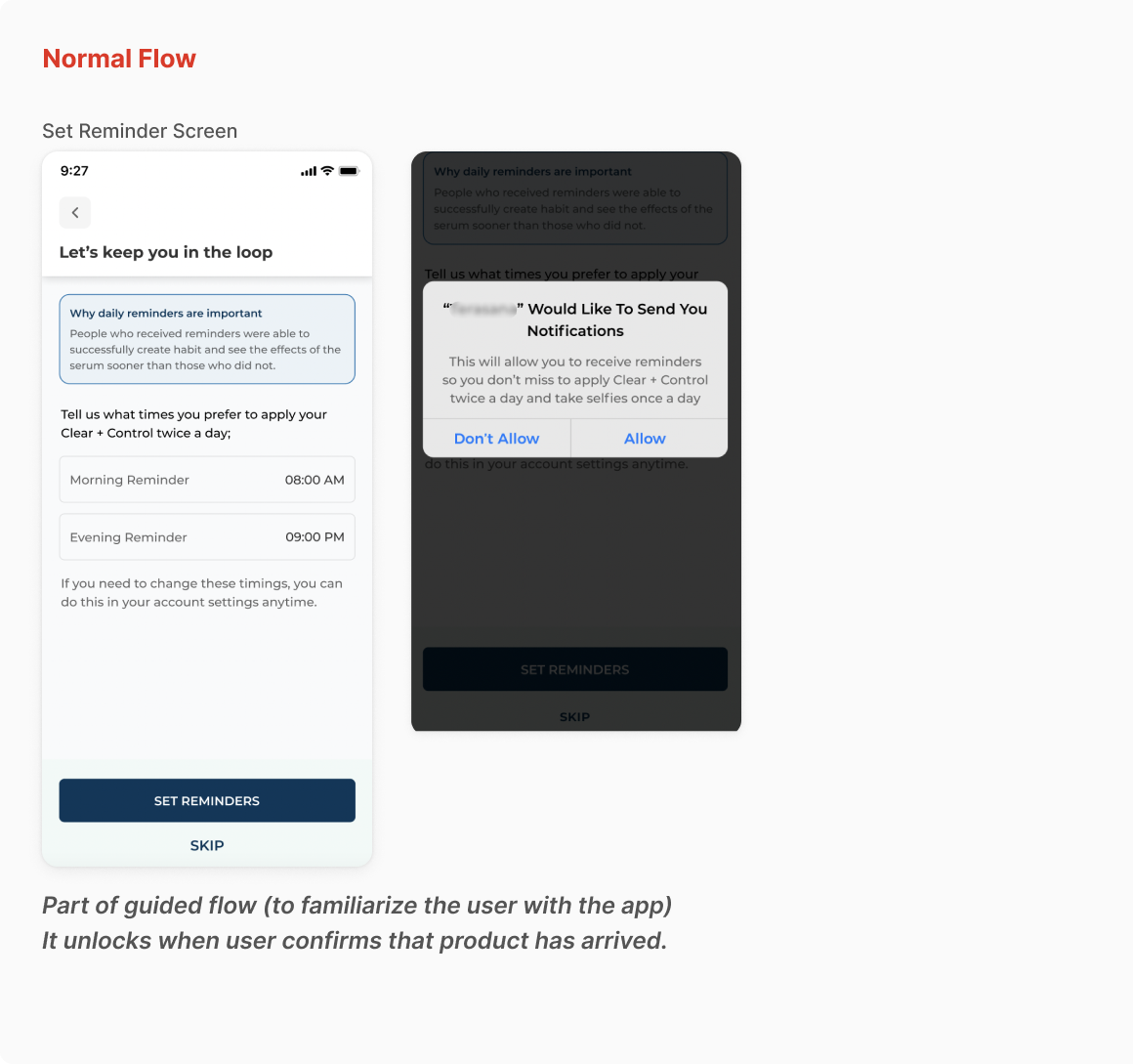

Phase 3: Product Use Begins
In this phase we just remind the user that’s time to apply the product and track their progress.
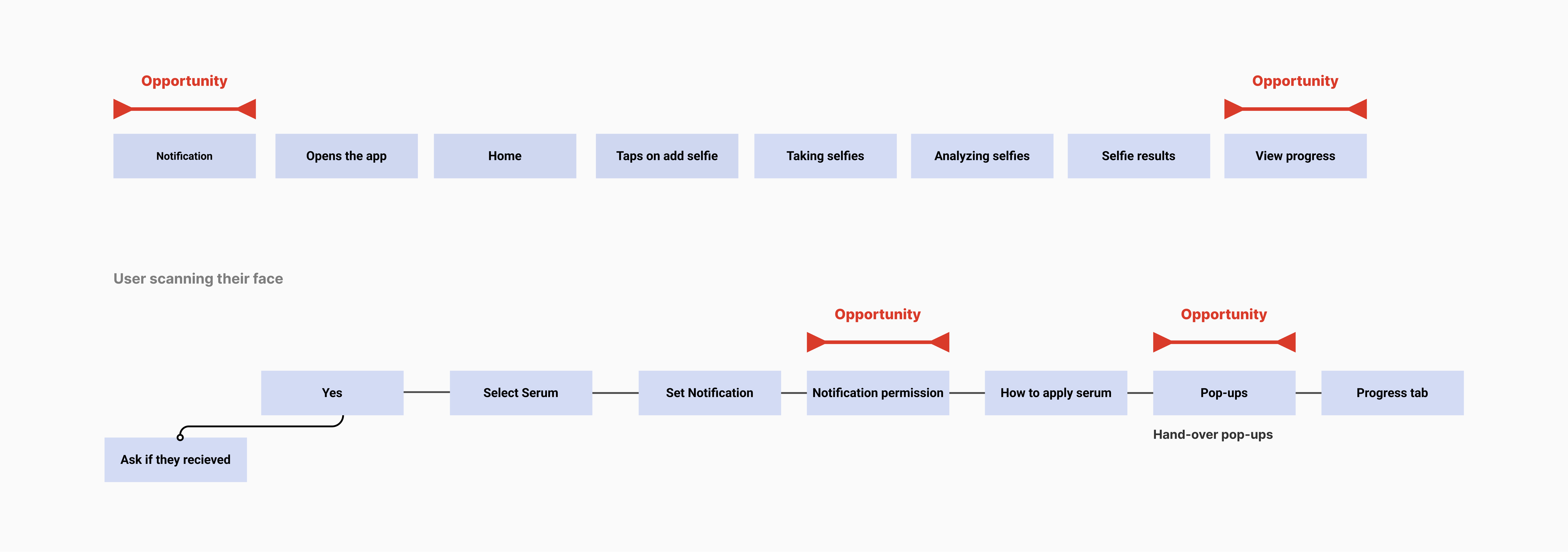
Notification Copy Strategy
Notifications were a key part of the experience. Since people often ignore them, we wrote short and clear messages that would show correctly on different screens without getting cut off.
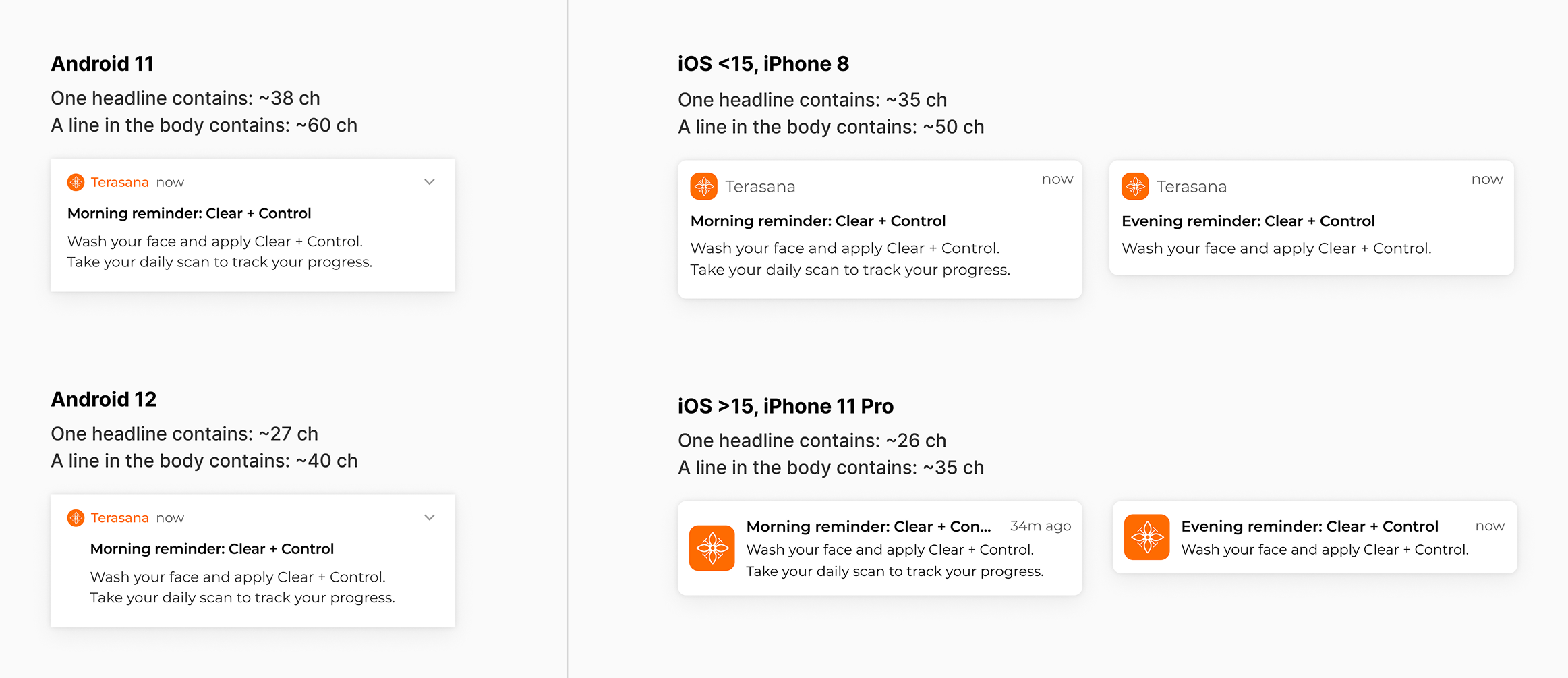
Progress Tab as Motivation
The progress tab showed users how their skin was improving. This became a strong motivator and a natural space to remind them to keep up with their routine.
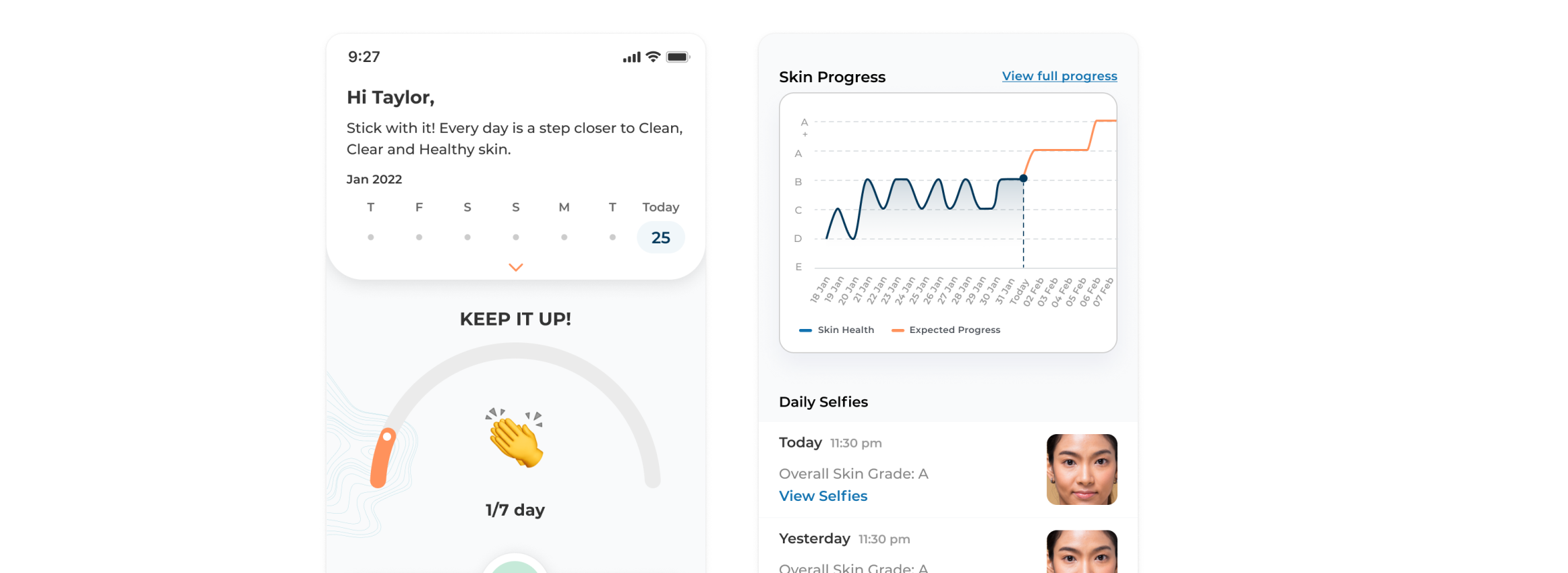
We created a design system to keep the app consistent and easy to update. Every change was shared clearly with the development team to make sure the implementation stayed in sync with design.

